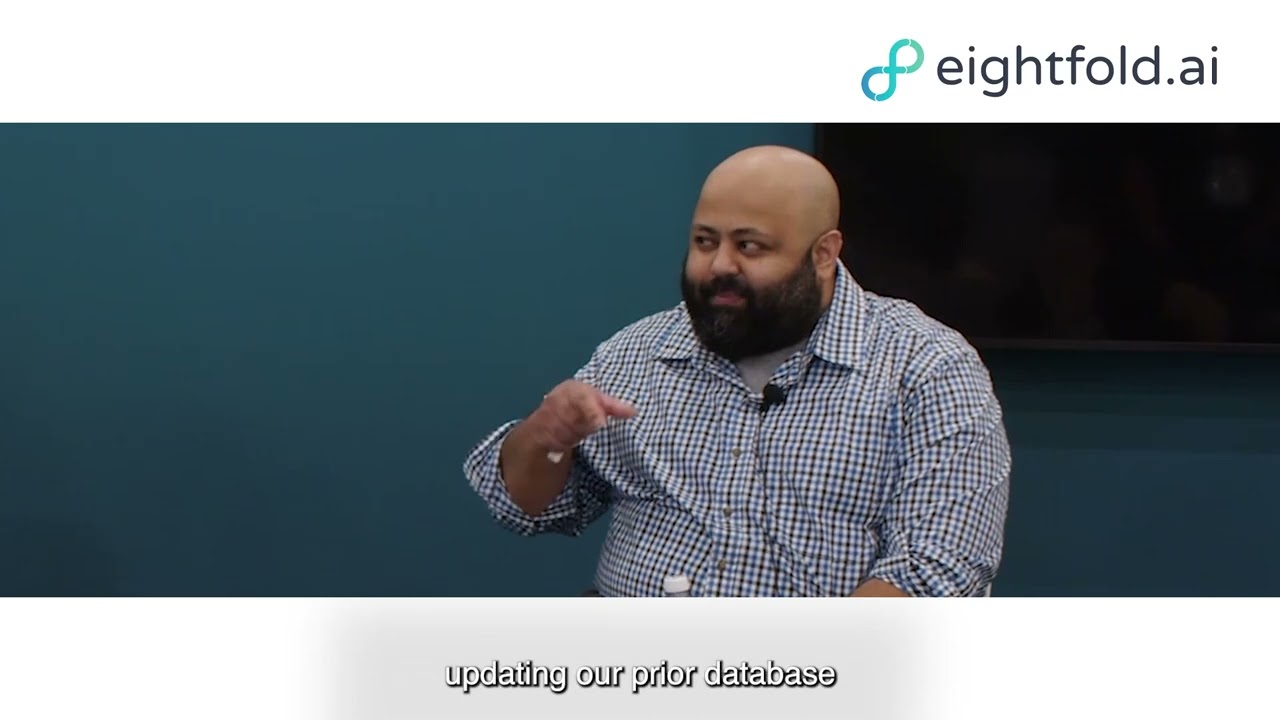Most recruiters know the struggle of having too many or too few candidates for open roles. It’s especially challenging for positions with hard-to-find skills or fields that have shrinking talent pools — like healthcare and education — with more people leaving than coming in.
The good news is that technology and increased access to data make job matching and finding the right candidates easier than ever before. With AI, hiring managers can now get a clear picture of their organization’s needs, available candidates, and the skills trends that are rising with competitors and in the market.
But for solutions like these to work, talent leaders need to embrace flexibility and new ideas about how work gets done, how jobs are filled, and how people and skills develop.
In this recent webinar, Eightfold AI’s Jason Cerrato, Senior Director of Product Marketing, and Rebecca Warren, Director of Customer Success, discussed how an integrated talent strategy helps organizations find the right candidates — whether they’re existing employees, new hires, or contingent workers.
Here’s why an elastic talent strategy can help overcome many of today’s challenges and help organizations quickly respond to changing needs.
Flexibility is a strength
As recently as a few years ago, hiring used to be a separate function for many organizations. “Let’s put up a wall, and we need to just peek over the fence every once in a while, but we don’t own it. It’s over there,” Warren said.

Related: Learn how audiovisual pioneer Dolby uses AI to integrate its full-time and contingent hiring plans into an elastic talent strategy.
With an elastic talent strategy, attracting and retaining talent becomes a co-ownership proposition. Throughout the organization, talent and business leaders use a flexible, data-driven mindset to fulfill talent process needs. With data revealing a more complete picture, talent teams can find the best candidates for the job — faster and at scale.
Another critical component of an elastic talent strategy is the role of the talent adviser who can plug into different parts of the cycle. Cerrato said some organizations are taking on the total talent elastic strategy with in-house recruiters direct sourcing for contingent roles. At other organizations, in-house recruiters monitor the contingent worker talent pool for full-time positions.
While working on an assignment, contingent employees learn a lot about the organization. When a company can move them to a different role instead of losing them completely, they reduce their open positions with people who can quickly add value rather than wait for an external hire coming in cold.
Finding new solutions for open positions
With an elastic talent strategy, hiring managers have multiple options to fill positions, including hiring internally, using contingent workers, or having employees do two half-time jobs in different roles. In some cases, it makes sense to assemble a team of people who each bring a handful of required skills to the table rather than keep searching for that unicorn with the entire checklist.

“Offering flexibility not only for the organization but for the person doing the work has resulted in a newfound appreciation for what we’ve gone through over the last few years,” Cerrato said. “The ability to have flexibility, freedom, and control over how we spend our day and do our work is valuable.”
In the past, managers were reluctant to let employees move around and work on different projects, or worse, they were talent hoarding. With an elastic talent strategy, employees can move to other positions and try new things. Managers can also look to outside contractors to help with projects until a full-time employee is hired.
Creating talent planning goals
In a recent poll, Warren asked about the audience’s status on talent planning for the new year. The results were surprising. She expected to hear about a lot of perfectly laid-out plans because planning can be a fairly stable and predictable process in many ways.
But the talent leaders answered that they were between a “work in progress” and “complete chaos.”
Warren’s big takeaway? It’s tough to plan when things are changing, not just month to month, but sometimes week to week, and even day to day.
Cerrato added that in especially large enterprises, there are “islands of excellence” and “deserts of despair.” Because there is not usually a single solution for all situations, organizations must feel their way through to understand the best way to respond — when it’s time to create a new plan or stay the course.
“Business agility comes from talent agility,” Cerrato said. “So the ability to understand your talent faster, the ability to have a dynamic plan that can shape and shift with the information, is the fast-approaching future.”

5 steps for getting started with building an elastic workforce
- Understand the work that needs to be done. Work closely with hiring managers and department leaders to map out roles, responsibilities, tasks, and projects to understand the organization’s needs.
- Look at your internal talent pool. Understand their existing and potential skills, and ask employees about their career goals. Are they looking for new opportunities? Do they need more flexibility? Do they want to change career paths?
- Connect the dots. Develop a plan based on the unmet skill needs of the organization and the workforce’s skills and career paths. This is where upskilling comes into play.
- Look internally first. After internal employees have been vetted and given new opportunities, then recruit from the external market to meet skill needs.
- Contingent workers may be the answer in a talent crunch. High-quality contingent workers can ensure that projects meet deadlines. In addition, direct sourcing allows talent professionals and business partners to incorporate contractors into a holistic talent strategy.
“Think about what you want to accomplish instead of saying, ‘That’s going to be too expensive,’ or ‘I don’t want to hire a temp,’ or ‘That means my team isn’t doing a good job,’ ” Cerrato said. “Thinking about that from the perspective of having another talent pool to access to help you accomplish the work is a shift a lot of recruiters have to get to.”
Organizations need to build their workforces based on what’s happening today, not what they did two, three, or five years ago. Success depends on designing the ability to adjust your hiring strategies based on the organization’s needs. With an elastic talent strategy, talent leaders can build flexibility into their staffing plans — and their organizations — to align with and drive the outcomes they want.
Ready to dig into your elastic talent strategy? Tune into the webinar for the full conversation and more actionable insights.










